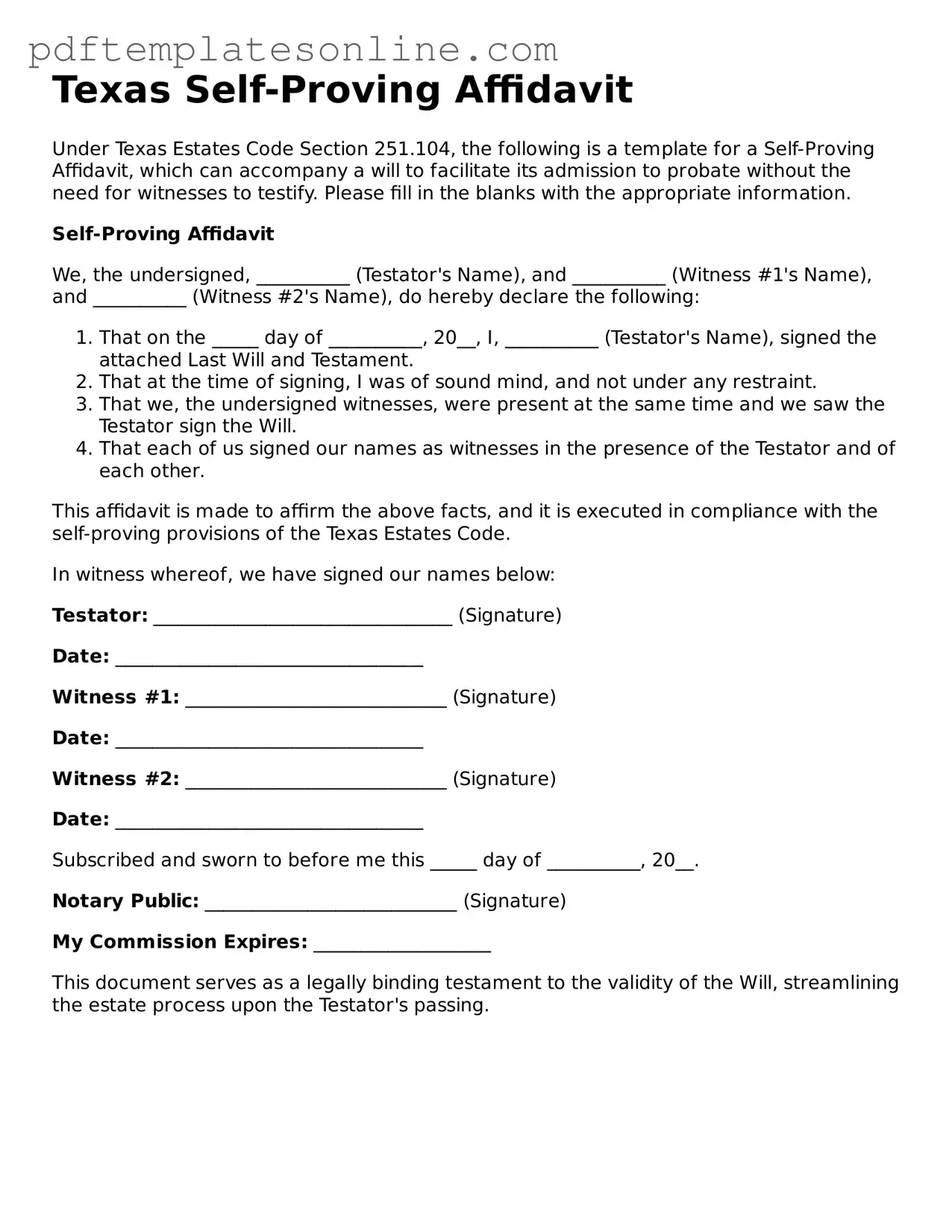Filling out the Texas Self-Proving Affidavit form can be a straightforward process, but many people make common mistakes that can lead to complications. One frequent error is failing to include the correct date. It’s essential to ensure that the date of execution is clearly written, as this indicates when the affidavit was signed. Without this information, the affidavit may be deemed incomplete.
Another mistake involves not having the required witnesses present during the signing. The Texas Self-Proving Affidavit requires the signatures of two witnesses. If these individuals are not present, the affidavit cannot be validated. It is crucial to confirm that both witnesses are available and willing to sign at the same time as the testator.
People often overlook the importance of having the affidavit notarized. A notary public must witness the signing of the affidavit to ensure its legitimacy. Without notarization, the affidavit may not hold up in court. This step is vital for the document to be recognized as a self-proving will.
Additionally, individuals sometimes fail to provide accurate information about the testator. The form requires specific details, such as the testator's name and address. Any inaccuracies can lead to confusion or legal challenges later on. Double-checking this information before submission is essential.
Another common mistake is neglecting to sign the affidavit in the correct order. The testator must sign the will first, followed by the witnesses and then the notary. If this sequence is not followed, it may invalidate the document. Ensuring that everyone understands their role in the signing process can help prevent this issue.
People may also forget to keep copies of the completed affidavit. Once the form is signed and notarized, it is important to make copies for all parties involved. This ensures that everyone has access to the document if needed in the future. Losing the original can complicate matters down the line.
Finally, some individuals do not review the entire affidavit before submission. It is wise to read through the document carefully to catch any mistakes or omissions. Taking the time to ensure everything is correct can save a lot of trouble later. A thorough review can help identify any potential issues that could arise.
